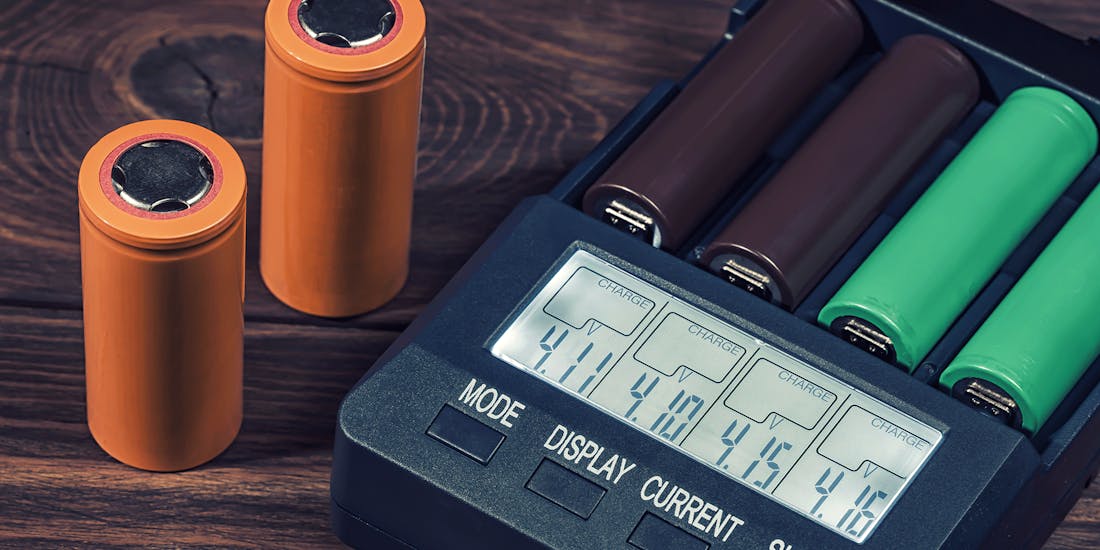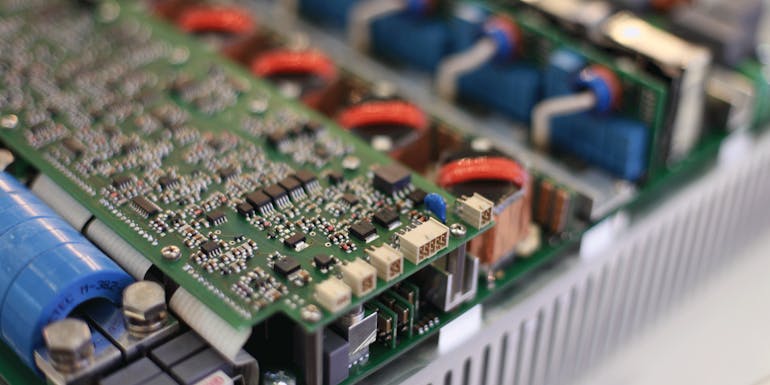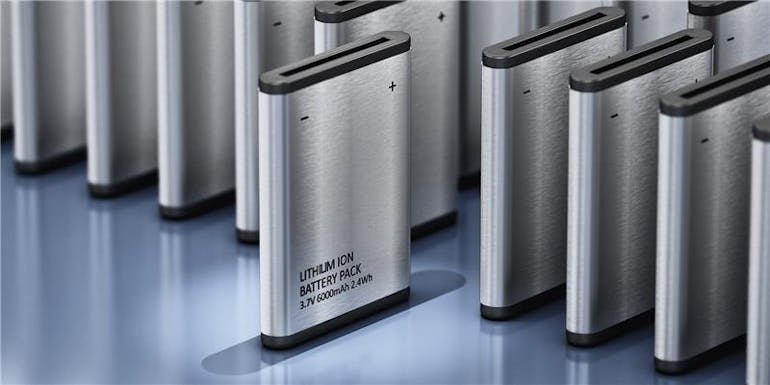
Usha Müller, 16 janvier 2025
Salles de séjour
Prolonger la durée de vie de la batterie : conseils pour un entretien correct
Notre mode de vie flexible se reflète dans l'équipement de nos appareils : les accumulateurs – également mieux connus sous le nom de piles rechargeables - font partie intégrante de notre vie. De plus en plus souvent, des accumulateurs sont intégrés dans les appareils électroniques afin de pouvoir les utiliser à volonté, sans dépendre d'une source d'électricité. Les nouveaux diffuseurs d'arômes Stadler Form sont également équipés de batteries. Ainsi, plus rien ne s'oppose à une soirée aromatique, même si aucune prise de courant n'est à portée de main. Dans cet article, nous t'expliquons comment fonctionne un accumulateur, quels sont les différents types d'accumulateurs et nous te donnons des conseils pour un entretien correct des accumulateurs afin que tu puisses profiter le plus longtemps possible de ton appareil à accumulateur.
Ce que tu apprendras dans cet article
- Fonctionnement des accumulateurs
- Quels sont les différents types de piles rechargeables ?
- Conseils pour bien entretenir la batterie
- Batterie défectueuse
Fonctionnement des accumulateurs
Accu est le diminutif d'accumulateur, qui vient du latin et signifie accumuler ou accumuler. Et c'est exactement ce que fait un accumulateur : il accumule et stocke l'énergie afin de pouvoir alimenter ultérieurement l'appareil dans lequel il est intégré.
Un accumulateur est un dispositif de stockage d'énergie rechargeable basé sur le principe de la réaction électrochimique. Dans chaque accumulateur se trouvent deux pôles, un pôle négatif, appelé cathode, et un pôle positif, appelé anode, qui sont noyés dans un électrolyte. Lors de la recharge de l'accumulateur, l'énergie électrique venant de la prise de courant est transformée en énergie chimique. Cela se produit lorsque l'anode cède des électrons qui sont absorbés par la cathode, ce qui entraîne une transformation chimique des matériaux contenus dans les électrodes. Les accumulateurs fonctionnent avec différentes substances chimiques, qui déterminent également le nom de chaque type, comme par exemple l'accumulateur lithium-ion. Lors de la décharge, la réaction inverse se produit et l'énergie chimique est transformée en énergie électrique qui alimente l'appareil en courant.
Ce processus de recharge peut être répété très souvent, ce qui fait de l'accumulateur un réservoir d'énergie réutilisable et durable. Contrairement aux piles traditionnelles, les accumulateurs sont certes plus chers à l'achat, mais la possibilité de les recharger fréquemment permet d'économiser de l'argent et de préserver un peu plus l'environnement.
Quels sont les différents types d'accumulateurs ?
On ne peut plus se passer des batteries dans nos objets quotidiens. Les télécommandes, les téléphones portables, les ordinateurs portables, les diffuseurs d'arômes, mais aussi les outils comme les scies sauteuses et les perceuses à percussion ou les voitures peuvent fonctionner sans fil grâce à elles. Les accumulateurs sont également utilisés pour l'alimentation de secours des bâtiments, que ce soit dans les centres de calcul, pour les systèmes d'alarme ou pour les mesures de maintien en vie dans les hôpitaux. En raison des possibilités d'utilisation très diverses, il existe des types d'accumulateurs comme le sable sur la mer, mais seuls quelques-uns sont souvent utilisés.Ce type d'accumulateur est utilisé lorsque des besoins en électricité considérables sont nécessaires, car des courants très élevés sont possibles pendant une courte période. L'accumulateur plomb-acide se trouve par exemple dans les voitures comme batterie de démarrage. Il est très répandu, car il est bon marché, fiable et robuste. L'inconvénient de ce type d'accumulateur est sa sensibilité aux décharges profondes et, par conséquent, sa courte durée de vie.
Autrefois, l'accumulateur au nickel-cadmium était très souvent utilisé. Il est particulièrement robuste, se charge rapidement et supporte mieux les variations de température que les autres accumulateurs. Mais depuis que la conscience écologique s'est davantage imposée dans l'esprit du grand public, ce type d'accu n'est plus que rarement utilisé. En effet, le cadmium est un métal lourd toxique. Un autre inconvénient est le fort effet de mémoire ; une perte de capacité causée par une recharge précoce. C'est pourquoi l'accumulateur NiCd doit toujours être entièrement déchargé avant d'être rechargé. S'il n'est pas complètement déchargé, il se souvient des besoins en énergie des dernières recharges et ne recharge plus que cette quantité d'énergie, ce qui entraîne une diminution progressive de l'autonomie de la batterie.
En raison du mauvais bilan environnemental des accumulateurs au nickel-cadmium, le métal lourd toxique a été remplacé par l'hydrure métallique. Les avantages et les inconvénients de ce type d'accumulateur restent à peu près les mêmes malgré le remplacement de la substance. L'accumulateur NiMH est plus écologique que les autres types d'accumulateurs, a une densité énergétique plus élevée que l'accumulateur plomb-acide et fournit de bonnes performances, même à des températures élevées. Les inconvénients sont l'autodécharge élevée, plus importante que celle des batteries lithium-ion par exemple. Et l'accumulateur nickel-métal-hydrure est sensible aux surcharges.
Pour une bonne raison, la batterie lithium-ion est la plus utilisée. Sur le site , ce type de batterie est le plus durable en termes de durée de vie et de nombre de cycles de charge. Les batteries lithium-ion peuvent supporter 300 à 500 cycles de charge et de décharge avant que leur capacité ne diminue. Ce type de batterie a une faible autodécharge. Si elle n'est pas utilisée pendant une longue période, elle ne perd pas beaucoup de sa charge. Ce type de batterie est très léger et possède une densité énergétique élevée. Cela signifie que la batterie lithium-ion peut stocker beaucoup d'énergie dans un petit paquet léger. Ce facteur est particulièrement important pour les appareils tels que les smartphones ou les ordinateurs portables, pour lesquels le poids et la taille de la batterie jouent un rôle important.
L'accumulateur lithium-ion-polymère est une évolution de l'accumulateur lithium-ion. En principe, l'accu LiPo fonctionne de manière identique à l'accu Li-Ion, à la différence que le premier possède un noyau cellulaire solide ou sous forme de gel, au lieu d'un noyau liquide. Il est donc malléable à souhait et trouve ainsi sa place dans les appareils les plus petits et les plus plats. L'inconvénient est que ce type d'accumulateur a une durée de vie nettement plus courte que l'accumulateur lithium-ion ou l'accumulateur métal-hydrure.
Conseils pour bien entretenir la batterie
Pour profiter le plus longtemps possible d'un appareil fonctionnant sur batterie, il convient de tenir compte de quelques points. Un bon entretien des batteries permet de prolonger considérablement leur durée de vie.- Éviter les températures extrêmes : Un appareil fonctionnant sur batterie ne doit pas être exposé à la lumière directe du soleil ni laissé dans un environnement trop chaud. Un diffuseur d'arômes avec batterie ne devrait par exemple pas être placé sur un rebord de fenêtre en plein soleil. Les appareils ne doivent pas non plus être utilisés pendant la charge, car la chaleur s'accumule dans l'appareil pendant la charge et l'utilisation. En cas de surchauffe, les performances de l'accumulateur peuvent être massivement réduites ou l'accumulateur peut même subir des dommages irréparables. La durée de vie des batteries est également réduite par le sous-refroidissement. Pour éviter un refroidissement trop important, l'appareil ne doit pas être utilisé ou stocké à basse température. Si l'appareil est devenu un peu froid, il est recommandé de le réchauffer avant de l'utiliser. Un refroidissement insuffisant peut entraîner la formation de cristaux sur les électrodes, ce qui peut également réduire les performances de la batterie.
- Optimiser les cycles de charge : Chaque batterie possède un nombre limité de cycles de charge. Lorsque ce nombre est atteint, la batterie perd de sa capacité. En d'autres termes, plus la batterie est chargée, plus elle perd rapidement sa capacité maximale. Le fait de charger et de décharger complètement l'accumulateur est également nuisible. Si un accumulateur est toujours chargé à fond, sa durée de vie est raccourcie. L'idéal est de toujours charger l'accumulateur entre 20 % et 80 %.
Des chercheurs britanniques et américains ont constaté qu'il est possible de prolonger la durée de vie des batteries lithium-ion par une mesure simple lors d'une charge rapide. Si l'appareil est débranché pendant trois minutes pendant la charge pour une pause de charge, cela peut contribuer à ce que la batterie puisse conserver une capacité de charge élevée. La raison en est que la courte pause de charge permet d'éviter les dépôts de lithium métallique sur l'électrode. - Utilisation régulière : Plus un appareil reste longtemps inutilisé, plus il est probable que la durée de vie de la batterie soit réduite ou, en cas de non-utilisation très prolongée, que la batterie devienne même inutilisable. L'accumulateur doit être rechargé régulièrement afin de maintenir la stabilité des processus chimiques dans l'accumulateur. Nous recommandons donc de charger régulièrement les appareils Stadler Form avec accumulateur intégré. Si les appareils ne sont pas chargés pendant trois ans, l'accumulateur peut devenir inutilisable.
- Utiliser le bon chargeur : Chaque appareil alimenté par batterie est livré avec un câble de recharge adapté. Utilise toujours le chargeur recommandé par le fabricant afin d'éviter toute surchauffe ou autre dommage à la batterie. Les chargeurs bon marché ou ceux dont la tension secteur n'est pas adaptée peuvent également raccourcir énormément la durée de vie de la batterie.
-
Nettoyer l'appareil : Pour que l'appareil fonctionnant sur batterie fonctionne parfaitement, il est important de l'entretenir. Pour l'entretien de la batterie, respecte impérativement les consignes d'entretien du fabricant de l'appareil afin de prolonger la durée de vie de ta batterie. Les contacts de la batterie doivent être maintenus propres afin de garantir une bonne connexion. La saleté et la rouille peuvent réduire considérablement les performances ou même rendre la batterie inutilisable. Nettoie donc régulièrement ta batterie et protège-la de l'humidité et de la saleté.
Batterie défectueuse
Une batterie endommagée peut se manifester par des déformations telles que des bosses, des creux ou un boîtier gonflé. Une surchauffe, des coupures soudaines ou des durées de fonctionnement anormalement courtes peuvent également être des signes d'alerte. Dans de tels cas, il existe un risque aigu d'incendie et d'explosion, car les batteries endommagées peuvent devenir chimiquement instables. Si tu constates de tels signes, tu dois immédiatement débrancher l'appareil, l'éteindre et ne plus utiliser la batterie. Range l'appareil alimenté par batterie loin des matériaux inflammables et élimine immédiatement la batterie de manière appropriée dans un centre de collecte. N'essaie en aucun cas d'ouvrir ou de réparer la batterie toi-même.
Suis les conseils simples pour l'entretien de la batterie et tu profiteras longtemps de ton appareil Stadler Form fonctionnant sur batterie.
Nous sommes à ta disposition pour toute question concernant le climat intérieur. Tu peux aussi t'inscrire à notre newsletter pour être informé régulièrement sur des sujets d'actualité, recevoir des témoignages sur nos produits ou lire Stadler Form Insights.







